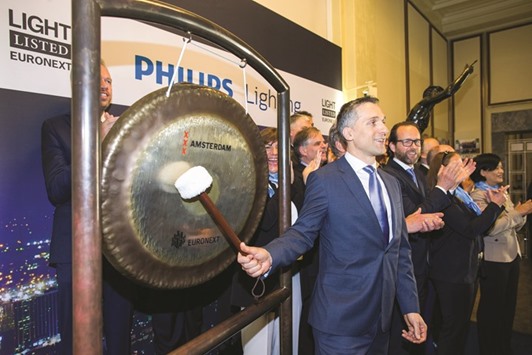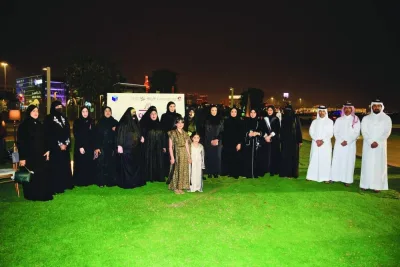Royal Philips NV Chief Executive Officer Frans van Houten isn’t getting the clean break from a declining business he may have wished for after yesterday’s trading debut of shares in the spinoff Philips Lighting NV.
The 125-year-old Royal Philips raised €750mn ($839mn) through an initial public offering of the world’s biggest general lighting company, but will retain at least a 71% stake, which it plans to sell during the coming years.
Van Houten has been trying to navigate a retreat from the lighting business since at least 2014 under a strategy to reinforce Philips as a maker of health-care equipment and consumer goods, which are generally more profitable markets. Philips opted to list the lighting unit after failing to find a buyer for the whole business through a private sale.
Now, Philips Lighting investors will have to contend with shrinking demand for conventional lamps and intensifying competition from Asian producers of longer-lasting light-emitting diodes, or LEDs.
“For Philips it’s a long journey to get out of the lighting business completely and focus on healthtech,” Jeffrey Vonk, an analyst at Morningstar, said by phone. “At some stage, conventional lighting will end, so it’s about managing the transition in the best way you can.”
With lighting in the throes of what it called a “technological transition,” Philips warned prospective investors in the IPO documents that it may not be successful in addressing the change.
LEDs, which are more energy efficient than the incandescent lamps Frederik Philips and his son started selling in 1891, are increasingly replacing conventional lights.
The rapid growth of the market is expected to continue as more governments support energy-saving lighting, though the higher prices commanded by LEDs compared with traditional lighting won’t make up for less revenue, according to the documents.
Furthermore, the market for LED lamps has suffered from dwindling prices, with one market study cited by Philips predicting the average price of bulbs and spots will drop at least 50% between 2014 and 2020.
Philips Lighting, made up of four main business units, reported 2015 profit of €547mn and had sales of €7.47bn. The lamps unit, comprising replaceable conventional halogen, fluorescent and incandescent lighting, is the main profit generator, yet demand is waning.
Philips Lighting will lose nearly 40% of its profit as sales of traditional bulbs decline, analysts at Barclays wrote in a note published April 26.
“Our top line has been declining because we have a big part of our business which is still conventional,” Philips Lighting Chief Executive Officer Eric Rondolat said in an interview Friday with Bloomberg TV. “But there are many parts in the company that are growing and I think that with time, and with the quarters coming, our profile will turn into a growth profile.”
In splitting off its lighting unit, Philips is treading a similar path to health-care equipment competitor Siemens AG, which spun off Osram in 2013 and has retained a 17% stake. As Osram’s biggest shareholder, Siemens has since clashed with management over strategy and tried earlier this year to oust its CEO.
For more on how Philips went about selling the lighting business, click here
Beefing up its health-care business, known as healthtech, through acquisitions could also prove problematic for Philips. “Without acquisitions, Healthtech cannot reach its growth and margin aspirations,” Jefferies analyst Peter Reilly wrote in a note last month. “The acquisition record does not inspire confidence that the Lighting IPO proceeds will be wisely re- invested.”

Eric Rondolat, chief executive officer of Philips Lighting, bangs a gong to indicate the start of trading at Amsterdam Stock Exchange yesterday. Philips Lighting shares jumped in their trading debut after Dutch parent company Royal Philips raised $839mn in an initial public offering of the world’s biggest general luminaries business.


